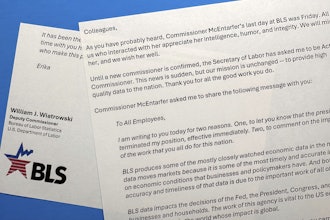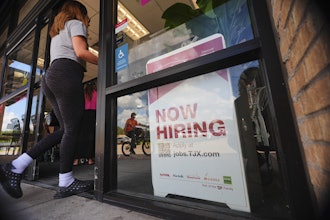The battle for talent is on in the oil and gas industry. Major companies are rushing to invest in strong growth regions like the Permian Basin and Bakken Shale Play, which already have full employment. Labor shortages and tensions around tariffs and trade are frustrating hiring teams. When coveted talent is identified, hiring managers are still hitting pause before finalizing candidate offers. These combined factors leave little room for error in hiring processes and suggest that it’s time for companies to assess their weaknesses in this part of the operation.
What Got Us Here?
During the downturn of 2014-15, the oil and gas industry went through a major workforce reduction, cutting over 440,000 jobs. 2017 saw a convergence of bullish factors pushing oil prices higher with the Bureau of Labor Statistics forecasting that the oil and gas industry would drive U.S. job growth with aggressive hiring surges. A more recent accounting from Zacks.com reports that “the sentiment in the oil market has not been this good in years” with employers “hiking wages in order to retain and attract workers.”
With labor now back in demand, downsized recruiting teams are struggling to keep up, grappling with unbudgeted head count growth, and like many other industries, dealing with serious skills shortages. Many workers left the industry during the downturn, changing careers or returning to school to pursue higher educational degrees. Add in the negative impact of steel tariffs on production costs and the unpredictability surrounding NAFTA, and things get even more complicated particularly for talent managers.
The talent shortage has also given rise to new headaches as employee quit rates rise to new levels. With staff headcount levels cut drastically prior to 2017, we are now seeing rival firms actively poach talent from each other, making it harder for companies to hold on to the talent they worked so hard to secure. While retention is always an issue, it is now becoming a more serious concern in oil and gas.
Delayed Hiring Impacts Revenue, Budgets, and Employer Brand
When hiring is delayed, there can be far reaching consequences, particularly in revenue-producing roles. For example, mechanics for a transport company are just as key as drivers or sales people since a “down” truck prevents shipments, and thus, revenue.
Hiring delays create more work for talent acquisition teams, requiring them to source and screen for more candidates in an increasingly sparse field. In situations where both candidates and companies are excited about an opportunity, but the employer won’t commit, the candidates believe they are unwanted and move on to more decisive employers. Negative candidate experiences like this can result in poor branding at the HR-level and may impact the overall brand. HR and talent acquisition (TA) teams can develop a poor reputation with hiring managers, resulting in caustic relationships. Frustrated with the existing flow of candidates from TA, many hiring managers will hunt for money within their P&Ls to pay for a 3rd party recruiting agency, driving up spend for the company.
Common Hiring Process Flaws
Whether it’s to invest more resources or change hiring models completely, it’s a smart move to investigate ways to tighten up the process, particularly for midstream and upstream jobs where the talent shortage is most critical. Here are ideas to address some of the more frequent problems we’re seeing today.
Recruiters are not up to speed in engaging experienced candidates. It’s critical today to have recruiters who are well-versed in selling to more practiced candidates, especially for midstream positions such as pipeline CDL drivers, diesel mechanics, electricians, instrumentation & electrical technicians, and engineers. Effective recruiting requires much more than just sourcing and calling candidates. Recruiters need to be more tactical, knowledgeable about the business, and very skilled at communication. Hiring managers would be well-served to coach recruiters on ideas to win talent such as explaining growth opportunities, why your company is better, and tips on where to find the best matches.
Recruiting from areas with full employment. A significant, yet common, misstep is over reliance on recruiting from geographic areas that are close to having effectively a zero percent unemployment rate. Alternatively, consider developing a plan to feed candidates into your system who are not local. Make sure your plan includes rotating shifts and viable housing options. Far too many companies are trying to hire for permanent roles with no available housing, company-provided or otherwise, or a flexible labor scheduling plan.
Inability to quantify hiring in business terms. Most HR and TA executives work more effectively when they are active participants in executive-level budget meetings and can directly address headcount planning and the associated costs to the business of delayed hiring. To accomplish this, HR/TA leaders need to improve their understanding of the entire business and be able to comfortably address recruiting issues in terms of P&L, production efficiencies, and other operational metrics rather than "HR-speak.”
Unrealistic hiring models. Digital assessment technologies, automated matching tools, and artificial intelligence systems are transforming how organizations recruit. While new technology appreciably improves time to hire and collaboration, companies with downsized internal teams may opt to outsource recruitment processes to provide better sourcing, quality of candidates, as well as more oversight and budgetary control. Recruitment Process Outsourcing (RPO) enables an organization to scale recruiting up or down depending on business need and avoid carrying extra headcount.
Conflicting market forces are at play right now. Business is up, but uncertainty prevails, impacting investment and production. Confidence in hiring is growing, yet budgets remain tight. Companies in the industry are feeling the talent squeeze as employees are encroached by competitors. This is a pivotal time to assess recruitment processes, address vulnerabilities, and get the talent pipeline in synch with the labor needs of the business.
About the Author:
Mike Starich is CEO of Orion Talent, a provider of talent acquisition, recruitment optimization, and military hiring to businesses in manufacturing, supply chain, energy, healthcare, and more. Prior to joining Orion in 1992, Mike served in the Marine Corps for seven years as a flight officer and marine officer recruiter.























